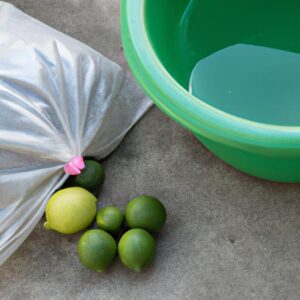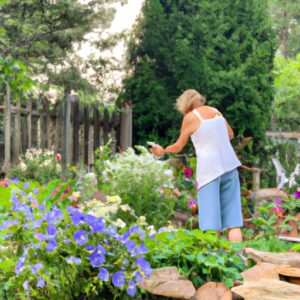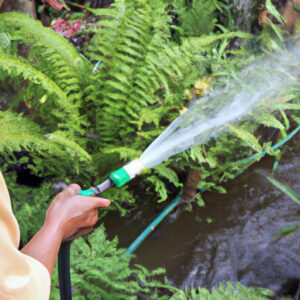Introduction
Imagine a school where children are not only taught traditional subjects like math and science but also get their hands dirty in the soil, nurturing plants and learning about nature firsthand. Gardening in schools has gained popularity in recent years as educators recognize its potential to foster environmental awareness, teach valuable life skills, and promote healthy lifestyles. However, in this article, we will explore a contrary viewpoint – why gardening should not be taught in schools.
Importance of Gardening in Schools
There is no denying the benefits of gardening education in schools. It provides an opportunity for students to connect with nature, learn about plant life cycles, and develop a sense of responsibility by caring for living organisms. Gardening can also enhance teamwork, problem-solving, and critical thinking skills. Moreover, studies have shown that gardening can improve mental health, reduce stress, and increase overall well-being.
Contrary Viewpoint: Why Gardening Should Not Be Taught in Schools
While the benefits of gardening in schools are undeniable, it is crucial to critically examine the potential drawbacks. One of the primary concerns is the limited curriculum time and resources available to schools. With a growing emphasis on core subjects like math, science, and language arts, finding adequate time for gardening becomes a challenge. Additionally, allocating resources such as funds, personnel, and space for gardening programs may not be feasible for all schools.
Moreover, diverting focus from core subjects to gardening may lead to an imbalance in academic priorities. As students’ time and energy are divided between different subjects, there is a risk of neglecting essential knowledge and skills necessary for their academic success. Furthermore, teachers may lack the expertise and training needed to effectively teach gardening, potentially diminishing the quality of education provided.
As we delve deeper into this topic, we will explore the theoretical disadvantages of teaching gardening in schools, practical challenges faced in implementing gardening programs, potential negative impacts on students’ academic performance, and alternative approaches to promote gardening outside the formal school curriculum. So, let’s continue our journey to gain a holistic understanding of why gardening should not be taught in schools.
Theoretical Disadvantages of Teaching Gardening in Schools
Limited Curriculum Time and Resources
In the fast-paced world of education, time is a precious commodity. Schools already face the challenge of fitting essential subjects into their curriculum, leaving limited room for additional activities like gardening. With standardized testing and academic pressures, finding adequate time for gardening becomes even more difficult. Schools must strike a delicate balance between providing a well-rounded education and meeting the demands of standardized assessments.
Furthermore, the availability of resources, both financial and material, poses a significant hurdle. Implementing a successful gardening program requires funds for tools, seeds, soil, and other necessary supplies. Unfortunately, not all schools possess the necessary resources to invest in gardening, which can hinder the implementation of such programs.
Diverting Focus from Core Subjects
While gardening undoubtedly offers valuable lessons, it is essential to consider the potential trade-off between gardening and core academic subjects. The time and energy spent on gardening activities may detract from crucial subjects such as math, science, and language arts. These core subjects provide the foundation for students’ intellectual growth and future academic pursuits.
By diverting focus from core subjects, there is a risk of students not receiving adequate instruction, practice, and mastery in essential academic areas. This imbalance may have long-term consequences for students’ academic success and readiness for higher education or the workforce.
Lack of Expertise Among Teachers
Effective teaching requires expertise and knowledge in the subject matter. While teachers are skilled professionals in their respective fields, gardening may not be an area of expertise for all educators. Teaching gardening effectively involves understanding horticulture, plant biology, and environmental science, among other specialized knowledge.
Without proper training and professional development opportunities, teachers may struggle to deliver high-quality gardening education. This lack of expertise can impact the depth and accuracy of the information provided to students, potentially undermining the educational value of gardening programs in schools.
As we explore the theoretical disadvantages of teaching gardening in schools, it is crucial to consider the practical challenges faced in implementing gardening programs. In the next section, we will delve into the practical aspects and potential obstacles that schools may encounter when introducing gardening into their curriculum.
Practical Challenges Faced in Implementing Gardening Programs
Insufficient Space and Infrastructure
One of the practical challenges schools encounter when implementing gardening programs is the lack of sufficient space and infrastructure. Many schools, especially those located in urban areas, have limited outdoor areas suitable for gardening. Without adequate space, it becomes challenging to create a thriving garden that can accommodate the needs of all students. Additionally, the lack of necessary infrastructure, such as irrigation systems or storage facilities, can hinder the sustainability and long-term success of gardening programs.
Seasonal Limitations and Maintenance Issues
Another hurdle in school gardening programs is the seasonal limitations and maintenance issues. Gardens are inherently influenced by seasonal changes, with different plants thriving during specific times of the year. This restricts the opportunities for continuous learning and engagement with gardening throughout the year. Moreover, maintaining the garden during school breaks or vacations can be a logistical challenge, as there may not be staff or students available to tend to the plants. This can result in neglected gardens and wasted efforts.
Safety Concerns and Potential Liabilities
Safety concerns and potential liabilities can also pose significant challenges in implementing gardening programs in schools. Gardens involve tools, equipment, and potentially hazardous materials such as fertilizers or pesticides. Ensuring the safety of students while working in the garden requires proper supervision, training, and adherence to safety protocols. Moreover, schools may face potential liabilities if accidents or injuries occur during gardening activities. Addressing these safety concerns and managing potential risks can be demanding for schools, adding an additional burden to already stretched resources.
As we explore the practical challenges faced in implementing gardening programs, it is essential to consider these limitations and potential obstacles. While gardening offers numerous benefits, it is crucial to assess the feasibility and readiness of schools to overcome these challenges. In the next section, we will delve into alternative approaches that can promote gardening outside of the formal school curriculum, ensuring that students still have the opportunity to experience the joys of gardening while mitigating these practical challenges.
Alternative Approaches to Promote Gardening
A. Community Gardens and After-School Programs
While it may not be feasible to incorporate gardening into the regular school curriculum, alternative approaches can be adopted to promote gardening among students. Community gardens provide an excellent platform for students to engage in hands-on gardening experiences outside of school hours. By partnering with local community organizations or neighborhood associations, schools can establish community gardens where students can actively participate in planting, tending, and harvesting crops. These gardens not only foster a sense of community but also offer valuable opportunities for students to learn about sustainable practices and environmental stewardship.
Additionally, after-school programs focused on gardening can be organized to cater specifically to students who have a keen interest in learning about plants and nature. These programs can provide specialized instruction, workshops, and activities to deepen students’ understanding of gardening and encourage their passion for horticulture. By offering these extracurricular opportunities, schools can ensure that students who are enthusiastic about gardening have avenues to explore and further develop their skills.
B. Partnerships with Local Gardening Organizations
Collaborating with local gardening organizations can be an effective way to promote gardening without burdening the school curriculum. These organizations often have the expertise, resources, and experience to guide students in gardening activities. By forming partnerships, schools can tap into the knowledge and support provided by these organizations. They can arrange workshops, field trips, or guest lectures that expose students to different gardening techniques and practices. Such collaborations not only supplement classroom learning but also broaden students’ horizons by connecting them with experienced gardeners and horticulturists.
C. Integration of Gardening in Extracurricular Activities
Another alternative approach to promote gardening in schools is to integrate it into existing extracurricular activities. For example, gardening can be incorporated into science clubs, environmental clubs, or even art clubs. This allows students to explore gardening in a more specialized and focused manner, tailored to their individual interests. By blending gardening with other activities, schools can strike a balance between providing opportunities for gardening education and maintaining a strong focus on core academic subjects.
In conclusion, while incorporating gardening into the regular school curriculum may present challenges, alternative approaches can be employed to promote gardening among students. Community gardens, after-school programs, partnerships with local gardening organizations, and integration of gardening in extracurricular activities provide students with valuable opportunities to engage in gardening and develop a love for nature. By adopting these alternative approaches, schools can ensure that students reap the benefits of gardening education while maintaining a balanced academic curriculum.
Potential Negative Impact on Students’ Academic Performance
Distraction from Academic Goals
While gardening in schools can be a valuable experience, it is essential to consider the potential distractions it can introduce. With limited time and resources, incorporating gardening into the curriculum may divert students’ attention away from their primary academic goals. As students spend time tending to plants and engaging in gardening activities, they may have less time available to focus on essential subjects like math, science, and language arts. This distraction can hinder their overall academic progress and achievement.
Inadequate Time for Other Subjects
As schools strive to provide a well-rounded education, it becomes crucial to allocate sufficient time to various subjects. However, integrating gardening into the curriculum may result in inadequate time for other essential subjects. With a fixed number of hours available for instruction, dedicating a significant portion of that time to gardening can lead to a reduced emphasis on core subjects. This imbalance may negatively impact students’ overall academic development and their ability to acquire the necessary knowledge and skills.
Unbalanced Development of Skills and Knowledge
While gardening undoubtedly offers unique learning opportunities, it is important to ensure a balanced development of skills and knowledge among students. By allocating a significant amount of time to gardening, other crucial areas of education, such as critical thinking, problem-solving, and literacy, may receive less attention. Students require a broad range of skills to succeed academically and in their future endeavors. Focusing excessively on gardening may limit the development of these essential skills and create an imbalance in their overall education.
In light of these potential negative impacts on students’ academic performance, it is vital to carefully consider the integration of gardening into the school curriculum. Balancing the benefits of gardening with the need for comprehensive academic development is crucial for providing an enriching educational experience. In the following sections, we will explore alternative approaches to promote gardening outside of formal school curriculum, allowing students to reap the benefits while maintaining a focus on their academic goals.
Conclusion
After carefully considering the contrasting perspectives on teaching gardening in schools, it is evident that the topic is nuanced and requires a balanced approach. While gardening offers numerous benefits, including environmental awareness, life skills development, and improved mental health, there are valid concerns regarding limited curriculum time, resource allocation, and potential negative impacts on academic performance.
To strike a balance, alternative approaches to promoting gardening can be explored. Community gardens and after-school programs provide opportunities for students to engage in gardening outside of formal school hours. Partnering with local gardening organizations can also offer expertise and support, ensuring students have access to comprehensive gardening education. Additionally, integrating gardening into extracurricular activities can provide a middle ground, allowing interested students to participate without compromising core academic subjects.
It is crucial to recognize that gardening is valuable, but it may not be the best fit for every school and every student. By considering the drawbacks and exploring alternative approaches, we can ensure that students receive a well-rounded education that caters to their diverse needs and interests.
In conclusion, while gardening should not be taught in schools as a mandatory subject, its benefits can still be harnessed through alternative methods. By fostering collaboration between schools, communities, and gardening organizations, we can create a comprehensive and inclusive approach to gardening education that complements the academic curriculum. Let’s embrace the world of gardening while ensuring the best possible education for our students.





